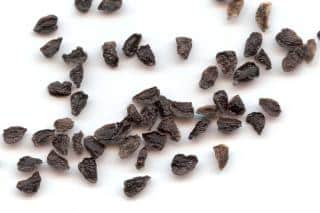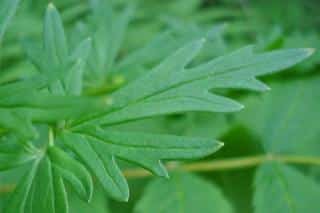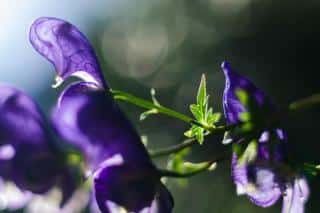

Aconite, also called monk’s hood or Jupiter’s helm, is a flower native to mountainous areas that offers a beautiful blue and sometimes yellow blooming.
Name – Aconitum napellus
Family – Ranunculaceae
Type – perennial
Height – 32 to 48 inches (80 to 120 cm)
Exposure – sun and part sun
Soil – ordinary, well drained
Flowering – May to October depending on the seasons
The floral scapes can grow to over 3 feet (1 meter) tall, which makes it an ideal plant to decorate the back of a flower bed.

If you’re planting in spring, you’ll have to water regularly after planting.

For aconites, cut back to the shortest in fall and possibly protect the base of the plant in colder areas.
Also called wolf’s bane, this plant’s name comes from Latin aconitum which means poison.
But although this plant is poisonous, it is also a cute flower that bears distinctive long floral scapes that uphold beautiful blue or yellow flowers depending on the species.
Its great height, often taller than 3 feet (1 meter), makes it a good plant to settle at the back of a flower bed where it will produce an nice bushy backdrop.
It also makes for great bouquet flowers that will keep for a long time – even a bouquet of dried flowers!

Simply ingesting a little bit of the plant can lead to heart problems that can cause death.
The root, that looks like a turnip, is the most toxic part of the plant.
Aconite was used by hunters for poison on the tips of their spears and arrows, and more recently was used to get rid of wolves and foxes.
Cut a few aconite flowers off the bush in summer, and set them in a vase: you’ll be surprised at how long they last in such a bouquet!
Good overview..
I understand national collection holder Melanie Domb said that aconitum napellus anglium group is the earliest to flower.
I cannot find any uk supplier, could she or anyone suggest?
Also I gather she is wanting to identify an April flowering one found in her garden. Interesting as I have a similar, pale blue, also obtained from an old garden, and I’ve no idea which it is! Sorry can’t help!
कृपया एकोनाइट का पौधा या बीज प्रर्दशित करें हमें खरीदना है।
(Please show us the aconite plant or seed we want to buy.)
Hello तुंगनाथ शर्मा, thank you for your comment. I added pictures of the seeds of the aconite plant to the article. I hope you find it helpful. We don’t sell seeds or plant, we only grow them and write about them. There are many stores online that sell the plant or the seeds.
आपकी टिप्पणी के लिए धन्यवाद। मैंने लेख में एकोनाइट पौधे के बीज की तस्वीरें जोड़ीं। मुझे उम्मीद है आपको यह उपयोगी लगेगा। हम बीज या पौधे नहीं बेचते हैं, हम केवल उन्हें उगाते हैं और उनके बारे में लिखते हैं। ऑनलाइन कई स्टोर हैं जो पौधे या बीज बेचते हैं।